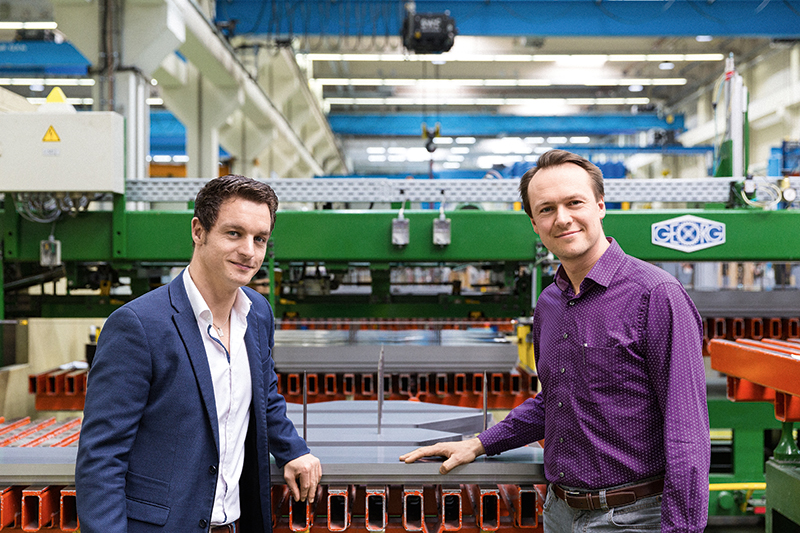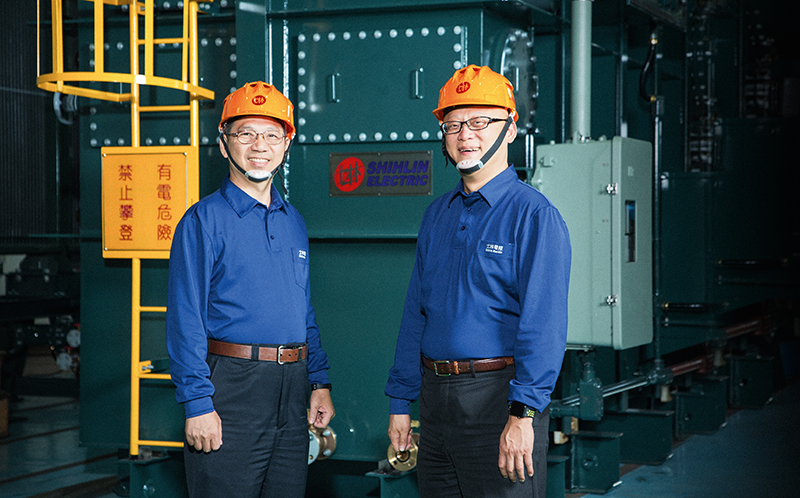When dealing with voltage fluctuations and poor grid quality, industrial companies have to put their own safeguards in place. Regulated transformers can help them achieve this.
It’s a blackout. The power grid is down. The roads are in a state of gridlock because traffic lights have switched off. The water supply has been disabled because the pumps are no longer running. Gasoline pumps stop dispensing fuel and, after a day goes by, emergency power systems in hospitals begin to fail. Because fuel assembly cooling in nuclear power plants also requires electricity, the threat of nuclear disaster looms.
Such nightmare scenarios attract a great deal of attention among the public at large. But it’s not always absolute catastrophes that warrant concern. For many industrial companies, everyday fluctuations in voltage are trouble enough—especially when they cause production downtime or even damage to electrical systems and production facilities. Voltage fluctuations are a global phenomenon and are not confined to the “weaker” grids of developing nations. Even highly developed grids in industrialized countries suffer from a growing level of volatility. The main culprit of these fluctuations in line voltage is renewable energy.
The wind doesn’t always blow at the same strength and cloudy weather ensures a constantly varying electricity stream from solar installations. And if major consumers of electricity like aluminium plants start up the smelters, the voltage drops and can only be compensated by increasing the power in-feed. Another problem is that monitoring of power grids is only organized at the medium-voltage level. If fluctuations occur in these voltage ranges, primary substations step in to mitigate the effects. Fluctuations at the low-voltage level, however, often go unnoticed by utility providers because there is no monitoring system in place.
Example RWE
At the Hambach surface mine in Germany, RWE operates a 400 kW dewatering pump so that the base struts of the lignite excavator keep dry. Switching operations and changes in load have a negative impact on the 6 kV grid. This is now kept in check by the experts at RWE with the help of Reinhausen’s ECOTAP® VPD®.
RELIABILITY FOR INDUSTRIAL OPERATIONS
At the same time, electronic control systems used in plants and machines are becoming more and more sensitive to these fluctuations. The ability of industrial companies to run efficiently and reliably is therefore increasingly dependent on the adherence to a defined voltage range. Any deviations from this range are guaranteed to cause interruptions in production processes. Even if the deviations last only a fraction of a second, they can cause sensitive frequency converters in many machines to shut down, requiring operators to start them up again. If voltages stray outside of the specified range for an extended period of time, the damage becomes even more severe due to the correspondingly lengthy downtime periods, which affect glass and steel works in particular.
Consumers of electricity from the power grid are usually able to connect and operate virtually any number of devices and installations to the network without consulting the grid operator, and at best this means that operators can only keep the quality of the supply voltage under control within a statistical framework.
Modern power grids may only present a low risk of equipment dropping out, but the emphasis is on the word “low”. The question is not whether fluctuations will cause interruptions in the production process, but rather how serious they will be when they do occur. If these technically unavoidable residual risks are to be guarded against on a case-by-case basis, appropriate measures must be introduced directly where they are needed. In this example, action would need to be taken directly in the supply system for the production facilities at the company itself. This means that industrial companies wishing to err on the side of caution need to take voltage quality into their own hands.

BUILDING A SECURE INTERNAL GRID
This is exactly the action taken over the last year by the german company Sächsisch-Bayerische Starkstrom-Gerätebau GmbH (SBG). In 2017, a situation arose in which the voltage level plummeted. Frank Tiepner, responsible for overseeing production engineering at SBG—a leading manufacturer of distribution transformers and special machines—explains how this problem led to a change in thinking: “We were able to see that the voltage was fluctuating within the specified range from the readings we took over the years from the meters in the sub-distribution units.”
Machines were repeatedly breaking down and, as he recounts, the reason was not easy to identify: “In this specific case we were unable to establish whether the issue was being caused by voltage fluctuations, a short-circuit in the grid, or another power consumer creating a problem in the grid. Normally, we were able to simply start up the machine again and continue production.” However, in early 2017 something else happened.
EXAMPLE SBG
SBG (Sächsisch-Bayerische Starkstrom-Gerätebau GmbH) protects the company’s internal grid with three parallel-connected, regulated distribution transformers. Thanks to this solution, production downtime caused by voltage fluctuations is a thing of the past. Frank Tiepner (right), head of production engineering at SBG, puts safeguards for production processes in place with the VRDT. Michael Bühnert, head of sales in Germany, ensures that SBG customers benefit from the company’s technical expertise.
The energy supplier had carried out construction work on the grid, leading to massive voltage disruptions. “At one point the voltage fell below 350 volts,” explains Tiepner, “and we could do little more than watch as one machine after the other broke down and brought arge sections of the production line to a standstill. That definitely served as a wake-up call. In a large company like ours, these incidents warrant a proper response. For this reason, we explored the possibility of guarding against such events by safeguarding our internal grid.”
Tiepner and his colleagues thus went in search of the most cost-effective solution. It soon became clear that only one solution would fit the bill: The three conventional distribution transformers, which were connected in parallel and supplied power to the company’s internal grid, had to be removed. In their place, the job would be carried out by three voltage regulated distribution transformers (VRDT) from SBG, fitted with ECOTAP® VPD®. “When considering our existing infrastructure, the SBG VRDT was by far the most cost-effective solution because the ECOTAP® VPD® allows us to install regulated transformers with exactly the same footprint as the unregulated version. So in that sense it’s almost a plug-and-play solution.
“At one point the voltage fell below 350 volts, and we could do little more than watch as one machine after the other broke down.”Frank Tiepner
The installation and connection conditions are identical, so it couldn’t be easier. We didn’t have to change anything about the main distribution with the ex-pensive circuit breakers, or the busbar system which is designed for supplying the three transformers.”
With the parallel connection of VRDTs, SBG had reached hitherto uncharted territory. For such situations, among other reasons, Reinhausen developed the ECOTAP® VPD® CONTROL PRO control system (see box). In order to ensure that the tap changers of all three transformers perform identical switching operations at the exact same time, thereby preventing tap differences, the control system creates a master/slave operation. This means that one of the tap changers sends a control command to the other two, thus ensuring smooth operation. Frank Tiepner was also excited by the other possibilities afforded by the control unit: “The control system can be very precisely programmed using a web-based interface. There is also a wide range of ways in which we can regulate, monitor, and control the transformers.” Tiepner believes that the goal of guaranteeing grid stability has now been achieved.
“Parallel-connected transformers are commonplace even in industrial companies. However, regulated distribution transformers connected in parallel on the primary and secondary sides are a real novelty.” Michael Bühnert, head of sales in Germany at SBG, goes further: “Many of our customers today are already benefiting from the technical expertise we have accrued together with MR, and a growing number of them work in industries where SBG VRDTs are employed along side Reinhausen control system technology.”
EXAMPLE SE & EC
SE & EC Shihlin Electric & Engineering Corporation, based in Taiwan, provides transformers to customers across the whole of Southeast Asia. Industrial companies in the region often have to contend with weak grids and extreme voltage fluctuations. Joseph Kuo, Senior Vice President (left) and Larry Hsieh, Manager of Material Purchasing Center at SE & EC, want to stabilize industrial processes by using regulated distribution transformers.
DECIDING ON A VRDT SYSTEM
Customers of the Taiwanese transformer manufacturer Shihlin Electric & Engineering Corporation are also faced with similar problems, but against a different backdrop. While it is the volatile feed-in of renewable energies that places a burden on the European grid, industrial companies in Southeast Asia often have to contend with weak grids and extreme voltage fluctuations. According to Joseph Kuo, Senior Vice President at Shihlin: “The weakest grids in the Southeast Asian market are found in Myanmar, Laos, and Cambodia. In these cases, it is certainly advisable to safeguard production.” But ultimately, Kuo is seeing huge demand throughout the whole of Southeast Asia for technologies designed for industrial companies that want to be protected against the consequences of voltage fluctuations.

He takes one customer as an example. A Taiwanese company that operates a production facility in rural Vietnam was reporting extreme instabilities, particularly during the summer months. Production was stopping for 10 to 15 minutes several times per month due to significant voltage fluctuations.
“Thousands of factories in Southeast Asia are contending with voltage fluctuations. The demand for stable internal company grids is huge.”Joseph Kuo, Shihlin Electric & Engineering Corporation
The production down times alone cost the company over 25,000 US dollars. In addition, the main switch was also damaged. Shihlin Manager Kuo explains that “thousands of production companies in Southeast Asia have to contend with exactly these types of problems. This gives us an idea of just how high the demand is for technology for stabilizing internal company grids.”
Shihlin is meeting this demand with distribution transformers. To this end, Reinhausen delivered an ECOTAP® VPD® to Taiwan in September 2017. The end customer was an industrial company in Myanmar that had ordered a regulated 1.5 MVA transformer from Shihlin Electric & Engineering Corporation. Larry Hsieh, Manager of Material Purchasing Center at Shihlin, explains why they decided on a tap changer from Reinhausen: “We initially contemplated procuring a tap changer from a manufacturer in Shanghai.
REINHAUSEN INSIDE
ECOTAP® VPD® — the compact class of distribution transformers
The ECOTAP® VPD® guarantees industrial companies a stable voltage — come what may! This is done by compensating for deviation in the medium voltage from the nominal voltage by changing the transmission ratio, which would otherwise remain constant. This compensates for fluctuations in voltage (both increases and decreases), enabling stable operation of industrial processes without interruptions. This saves precious production time and money. The ECOTAP® VPD® is so compact that it does not make the distribution transformer any larger. The electro-mechanical operating principle of the proven MR vacuum technology with 500,000 maintenance-free tap-change operations ensures stable, reliable operation for decades without the need to service the primary equipment.
ECOTAP® VPD® CONTROL und CONTROL PRO
The controller of the tap-changer, the ECOTAP® VPD® CONTROL, is also compact. It supports space-saving installation on the busbar through the use of an adapter. All of the parameterization can be performed conveniently on the controller — you don’t even need a laptop. The additional module CONTROL PRO enables parallel operation of the regulated transformers, among other advantages.
Using a local business with a shared language seemed very appealing to me at first. As a buyer, the costs are of course the most important aspect. The ECOTAP® VPD® is extremely competitive in this regard, as well as being a product from the worldwide leader in OLTC manufacturing. This was crucial to our decision, along with the strength of the Reinhausen brand, the reliability and quality of the products, and the strong service support.”
A WELL-MAINTAINED GRID
Regulated transformers can also stabilize voltage in systems where cable lengths and load changes lead to fluctuations, as was the case with RWE Power AG. RWE put two controllable three-winding transformers into operation in the Hambach lignite surface mine in Germany. The mine is located to the west of Cologne, right in the heart of the lignite fields surrounding the river Rhine. It opened in 1978 and currently reaches a depth of about 400 meters. Safe extraction of coal in the open-pit mine requires engineers and workers to lower the water table by drilling wells, installing pumps, and laying pipelines. Drainage is achieved using pump shafts. Electricity is supplied to the shafts by compact stations or directly from medium voltage.
A compact station contains a distribution transformer, a medium-voltage system, and a low-voltage system. A frequency converter powers the shaft pump, which has a nominal output of 400 kW. The cables in this 6 kV grid are very long. As a result, fluctuations of electricity in the grid often occur during switching operations or load changes. This in turn sometimes interferes with the intermediate circuit of the frequency converter. Nevertheless, this is a problem that workers at RWE, together with the Power Quality experts from MR, have since managed to solve. It became rapidly clear that the best technological solution was again the ECOTAP® VPD®. Another huge advantage of Reinhausen from the perspective of RWE is that it already meets the requirements of the EU Ecodesign Directive for 2021.
YOUR CONTACT
Do you have any questions about the possible uses of the ECOTAP® VPD®? Franco Pizzutto is here to help:
f.pizzutto@reinhausen.com
